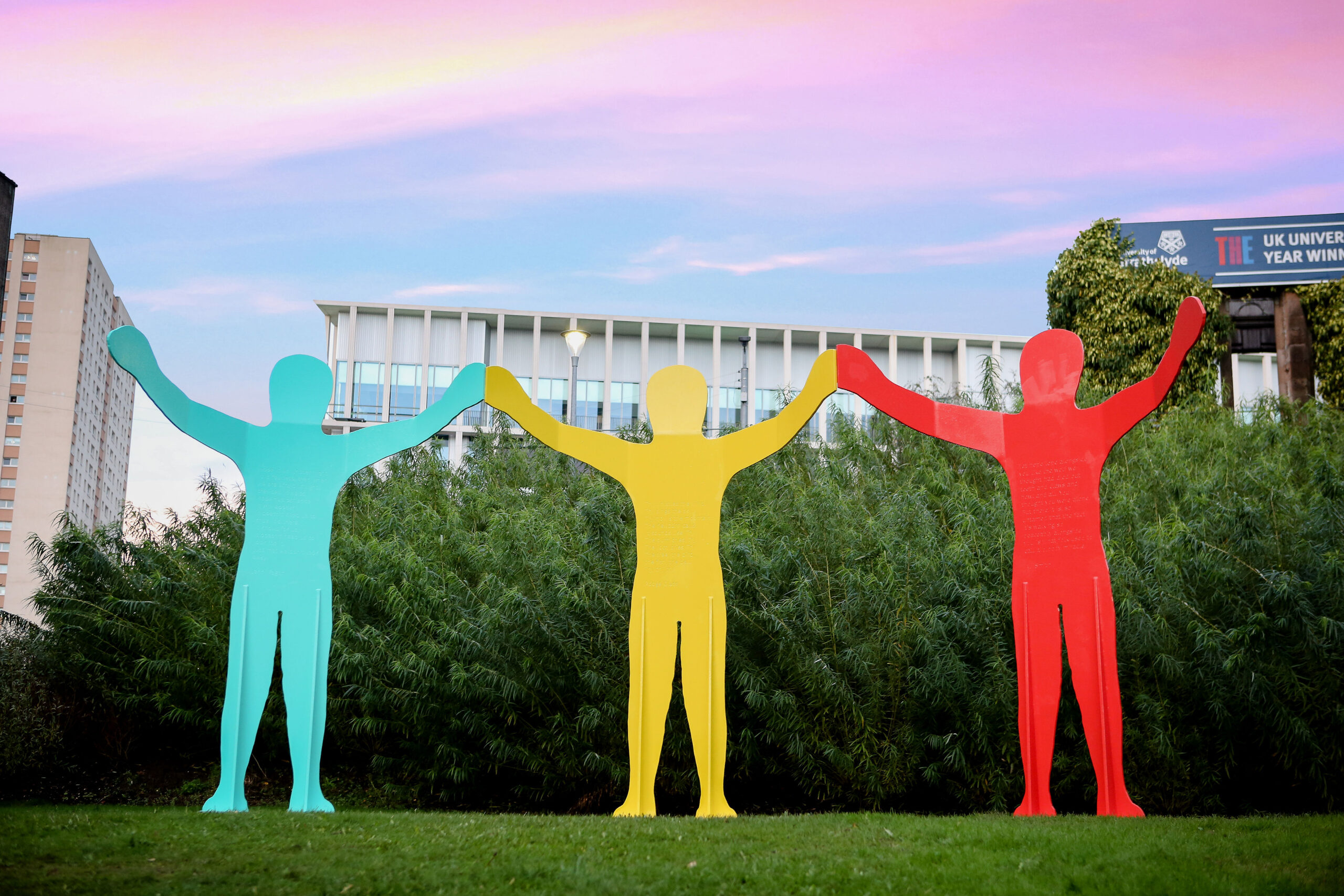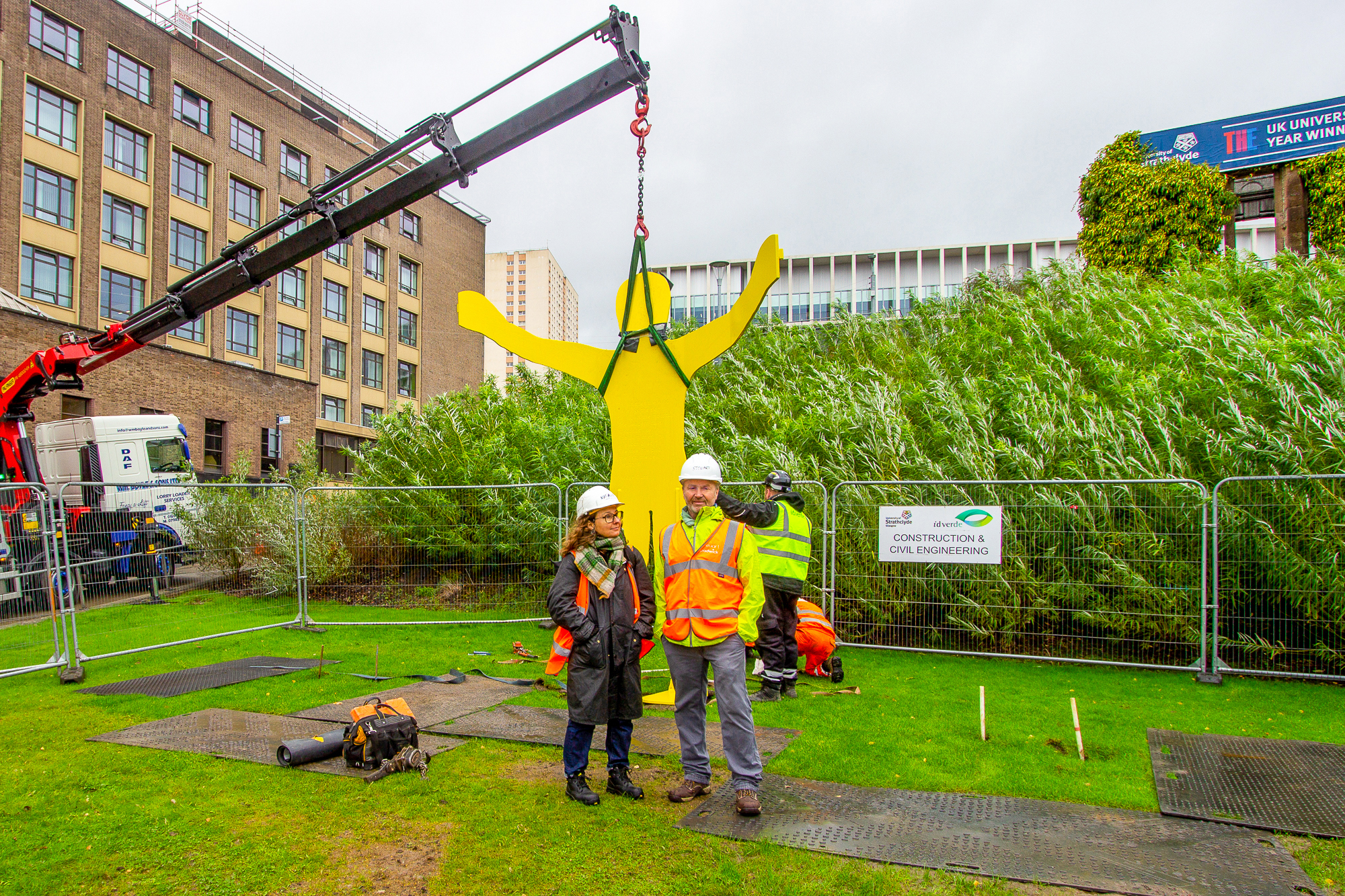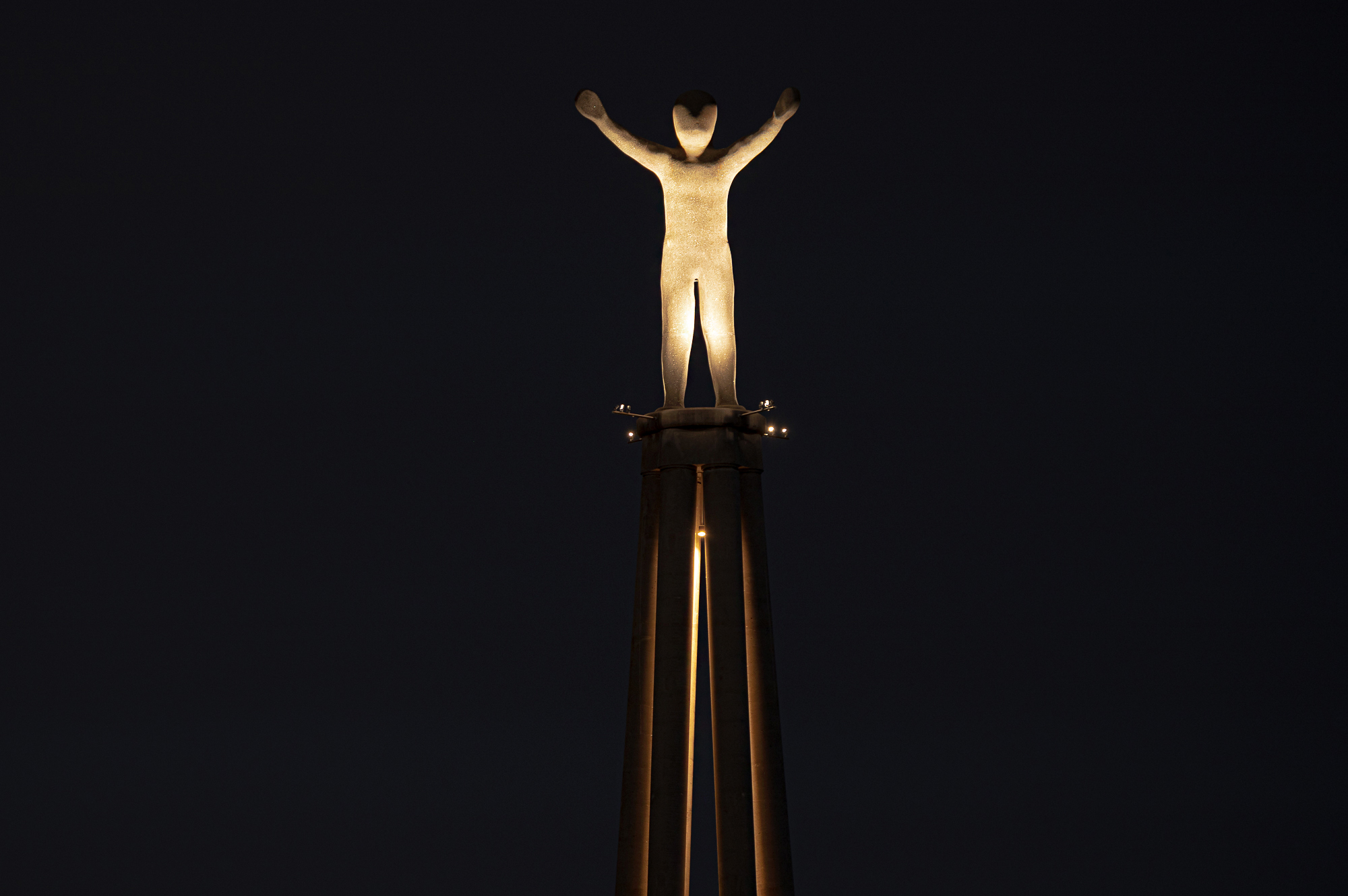
@Keith Hunter Photography @Edinburgh Photographic @Fourfifteen Photography
The Hope Sculpture – A Gift to Glasgow and COP26 Legacy
An engaging art installation, the Hope Sculpture, has finally been unveiled in Glasgow by artist and designer Steuart Padwick across three locations.
The project aims to reflect on the scale of the climate emergency and the need to work together to build a better future. The project, supported by Glasgow City Council is part of the official COP26 legacy and will form an important part of making a difference beyond COP.
Leading industry partners have collaborated on the Hope Sculpture to showcase a sustainable future with 75% lower carbon impact.
![]()
“It began as a conversation with Ramboll and became a legacy gift from 50 companies to Glasgow.” Steuart Padwick – Artist/Designer
Working with principle build partners, Ramboll, Aggregate Industries, Urban Union and Keltbray the Hope Sculpture is a showcase of how the construction industry can respond to build better and more sustainably as we transition to a net zero future.
It is the centre piece of three public art installations by Steuart Padwick located across Glasgow, with each sculpture constructed using low carbon, reclaimed, recycled or sustainable materials, of which, almost all have been locally sourced. It is a showcase of how industry, organisations and people are committed to build more sustainably, as we transition to a net zero future.
At 20m high, the monumental Hope Sculpture represents a beacon of hope and positivity towards reaching global environmental milestones, located in Clyde Gateway’s beautiful woodland park at Cuningar Loop. Its long, elegant columns take their form from the brick chimney stalks that once littered the East End of Glasgow. Unlike its predecessors, this deconstructed chimney stalk is made from an innovative new low carbon 100% cement free concrete incorporating locally sourced aggregates. On top of the columns is an age, gender, race neutral child, embracing the surrounding nature and is reaching out to a greener, hopeful future. It too is constructed using 100% cement free concrete and recycled crushed glass. Hidden from view, but significant also to the carbon impact of the build are re-claimed steel gas pipes used for the piling and recycled rebar, all contributing to the Hope Sculpture’s huge 75% lower carbon impact.

Urban Union Managing Director Neil McKay says:
“Our reasons for being involved in the Hope Sculpture project are two-fold.
“The construction industry has a central role to play in helping to reduce the world’s carbon emissions and by using sustainable and reclaimed materials to create this piece of art, it will serve as a striking reminder of our climate change ambitions.
“But what is also incredibly important to us, is that it will provide a legacy from COP26 which can be enjoyed by the local community, and visitors to Cunigar Loop, for decades to come.
“At Urban Union, our developments are not merely the regeneration of bricks and mortar, but that of communities. This, I believe, is fundamental to their success.
“By taking a community focus rather than simply building new homes, we can help to promote healthy lifestyles and community interaction through attractive streets, public artwork, gardens and useable open spaces.
“We have seen the impact of this approach at our Laurieston Living development in Glasgow where we partnered with local stakeholders to create a cohesive arts strategy for the area with the ambition of connecting its rich history and its people together with the aspirations of the community.
“As such, we hold similar ambitions for the Hope Sculpture and look forward to seeing the community engage with and enjoy it.”

Two further sculptures include the ‘Beacon of Hope’ at Glasgow Central Station and the Hope Triptych located at Strathclyde university both feature the Child of Hope. Made from contoured layers of FSC Scottish-grown Sitka Spruce, the Beacon of Hope celebrates the expanding timber construction industry that Scotland is developing, whilst the Hope Triptych is a playful adaptation of the Child of Hope, composed of three colourful figures, symbolising the power of coming together and made from reclaimed sheet steel with a low carbon cement-free concrete foundation.
Linking our built environment with improved mental well-being, Padwick has worked with Mental Health Foundation on all messaging. Words of Hope have been written by some of Scotland’s favourite voices, writers, and poets as well as local school children. These words have been inscribed directly onto all the sculptures.
Each sculpture has mental health signposting close by to offer a range of support.
Climate change is a global emergency and one in which we all have a role to play. To inspire action and share messages of hope across the world, Padwick teamed up with Glaswegian BAFTA winner, Hannah Currie, and All3Media’s Bullion Productions to produce a thought-provoking film titled ‘A Conversation of Hope.’ Rooted in Glasgow, but with a universal message.
The team has also developed dedicated activities for school children, giving an insight to the wide-ranging exciting career opportunities in the construction sector. The games, tasks and discussion topics highlight the significant role designers, engineers, constructors, and scientists all play in creating a more sustainable future.


